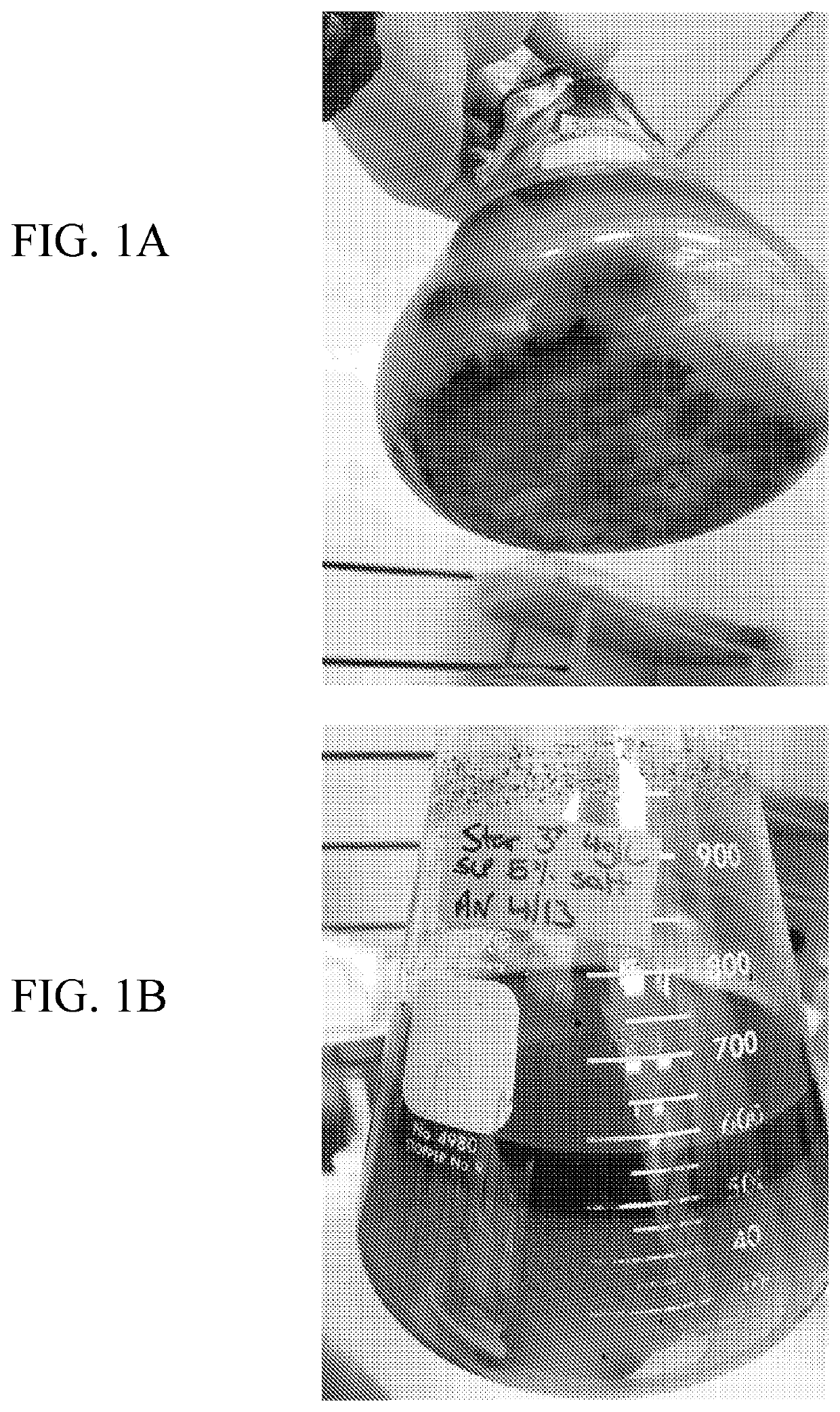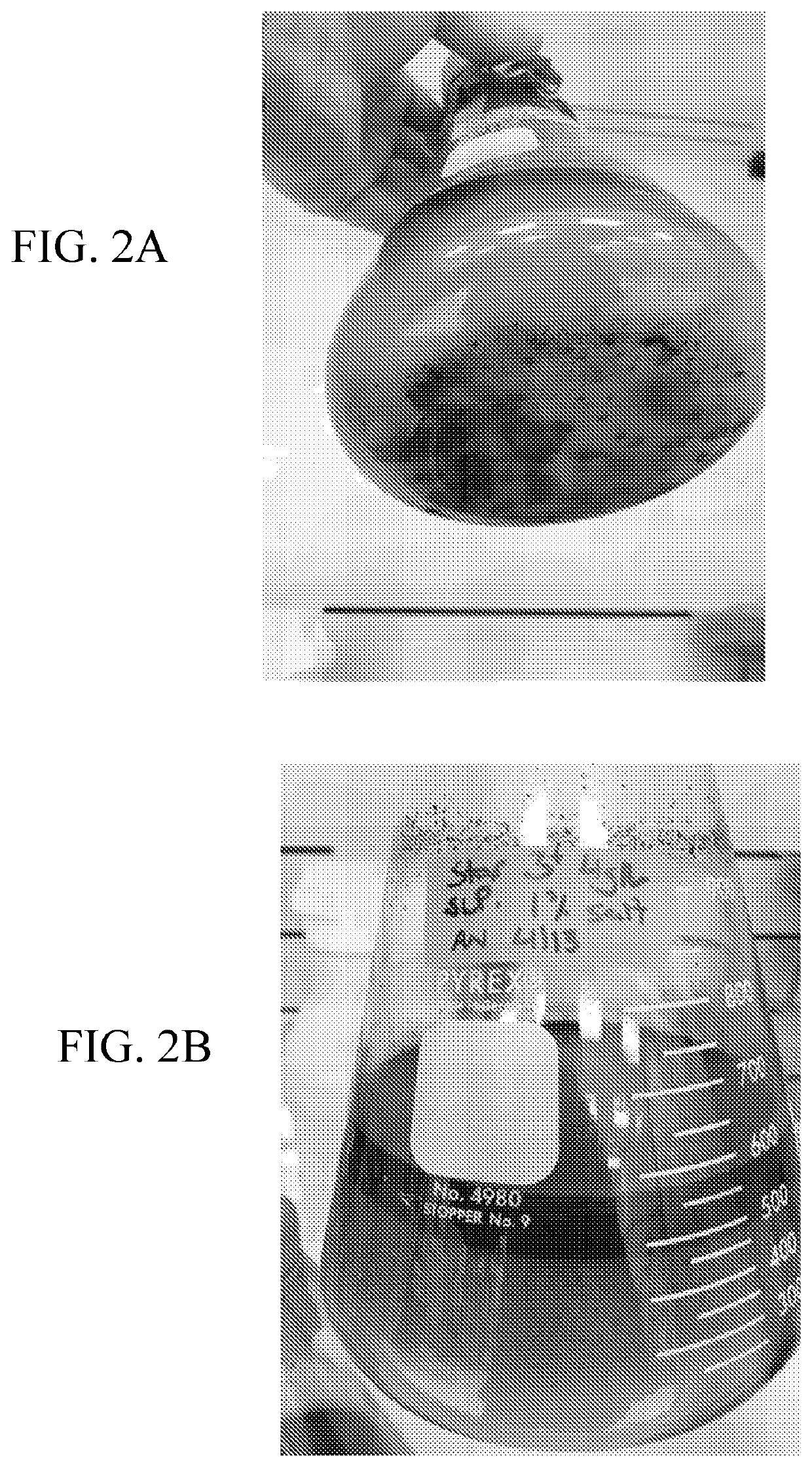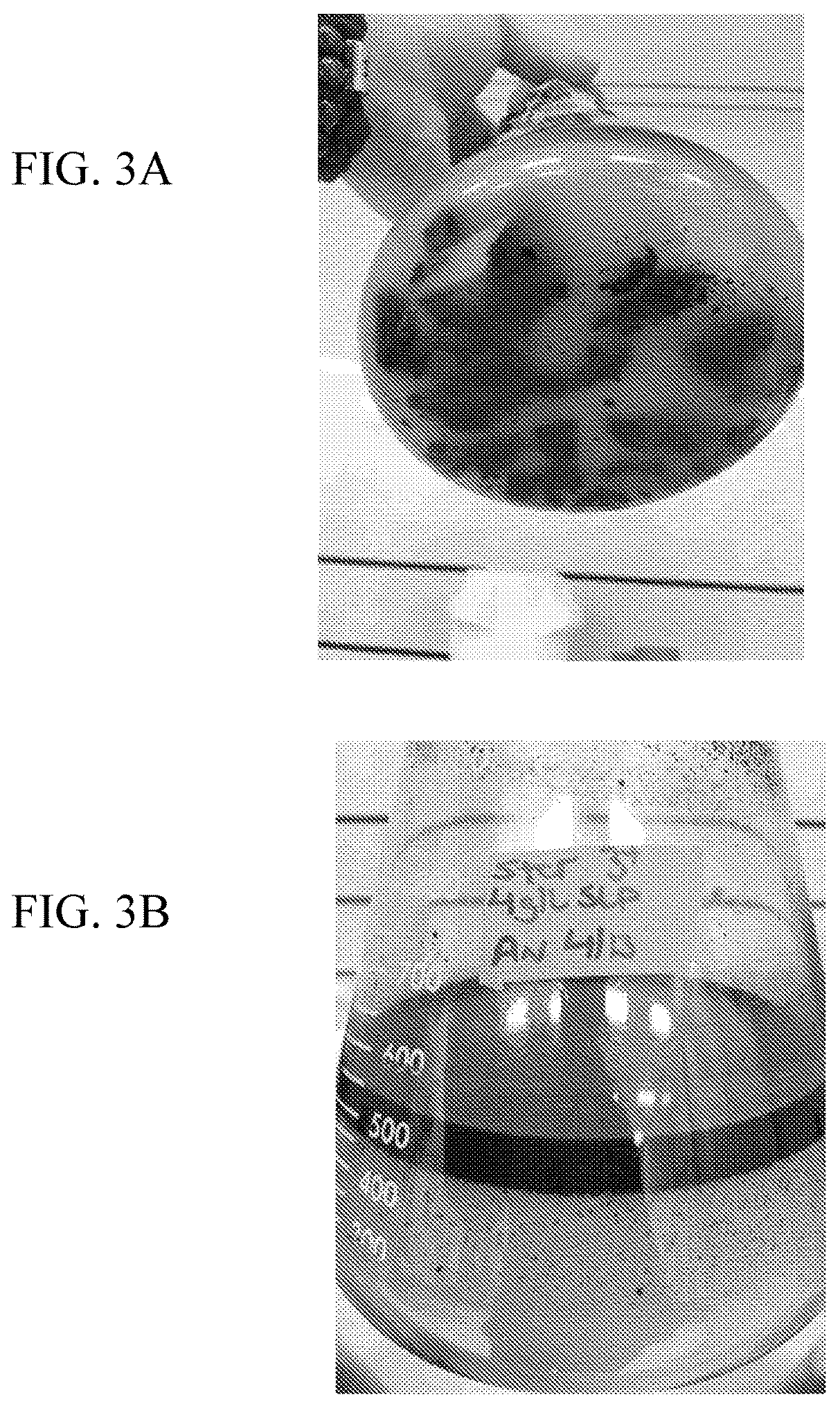Treatment for upgrading heavy crude oil
a technology for upgrading and crude oil, applied in the oil and gas industry, can solve the problems of reducing the overall productivity of an oil field, requiring significant amount of energy, and affecting the production efficiency of oil wells, so as to improve the value of crude oil, improve production, and improve the effect of oil well production
- Summary
- Abstract
- Description
- Claims
- Application Information
AI Technical Summary
Benefits of technology
Problems solved by technology
Method used
Image
Examples
example 1
ion of Precipitated Asphaltene Using Yeast-Based Composition
[0166]Fully precipitated and hardened asphaltene from an oil refinery is liquefied using a yeast-based composition of the subject invention. As shown in FIGS. 1-7, solutions of yeast products (500 ml), purified SLP and ionic liquid are compared with respect to ability to liquefy 100 g of asphaltene precipitate in shaker flasks.
[0167]As shown in FIG. 8, the flasks are subjected to 5 hours of shaking, after which amounts of asphaltene precipitate are determined.
example 2
on of a Yeast Fermentation Product
[0168]A yeast fermentation product can be obtained via cultivation of a Wickerhamomyces yeast (e.g., W. anomalus) in medium containing necessary sources of carbon, nitrogen, minerals and optionally, antimicrobial substances to prevent contaminating bacterial growth. The culture can be grown with an additional carbon source, particularly, a saturated oil (e.g., 15% canola oil, or used cooking vegetable oil). The pH begins at 5.0-5.5, then decreases to 3.0-3.5, where it is stabilized. The fermentation broth, harvested after 20-24 hours of cultivation at 25-30° C., comprises the Star 3+ product.
[0169]Accumulation of sophorolipids in the fermentation broth can occur after 7 to 9 days of fermentation. Upon completion of the fermentation, the culture containing biomass and, if applicable, low concentration of sophorolipid, can then be added to the composition of the subject invention.
example 3
on of Yeast Fermentation Products
[0170]A yeast fermentation product is obtained via cultivation of a biosurfactant-producing and / or metabolite-producing yeast, such as, for example, Pichia anomala (Wickerhamomyces anomalus). The fermentation broth after 7 days of cultivation at 25-30° C. can contain the yeast cell suspension and, for example, 4 g / L or more of biosurfactant.
[0171]The yeast fermentation product can also be obtained via cultivation of a biosurfactant-producing and / or metabolite-producing yeast, such as, for example, Starmerella bombicola. The fermentation broth after 5 days of cultivation at 25° C. can contain the yeast cell suspension and, for example, 150 g / L or more of biosurfactant.
PUM
| Property | Measurement | Unit |
|---|---|---|
| temperature | aaaaa | aaaaa |
| temperature | aaaaa | aaaaa |
| temperature | aaaaa | aaaaa |
Abstract
Description
Claims
Application Information
 Login to View More
Login to View More - R&D
- Intellectual Property
- Life Sciences
- Materials
- Tech Scout
- Unparalleled Data Quality
- Higher Quality Content
- 60% Fewer Hallucinations
Browse by: Latest US Patents, China's latest patents, Technical Efficacy Thesaurus, Application Domain, Technology Topic, Popular Technical Reports.
© 2025 PatSnap. All rights reserved.Legal|Privacy policy|Modern Slavery Act Transparency Statement|Sitemap|About US| Contact US: help@patsnap.com



